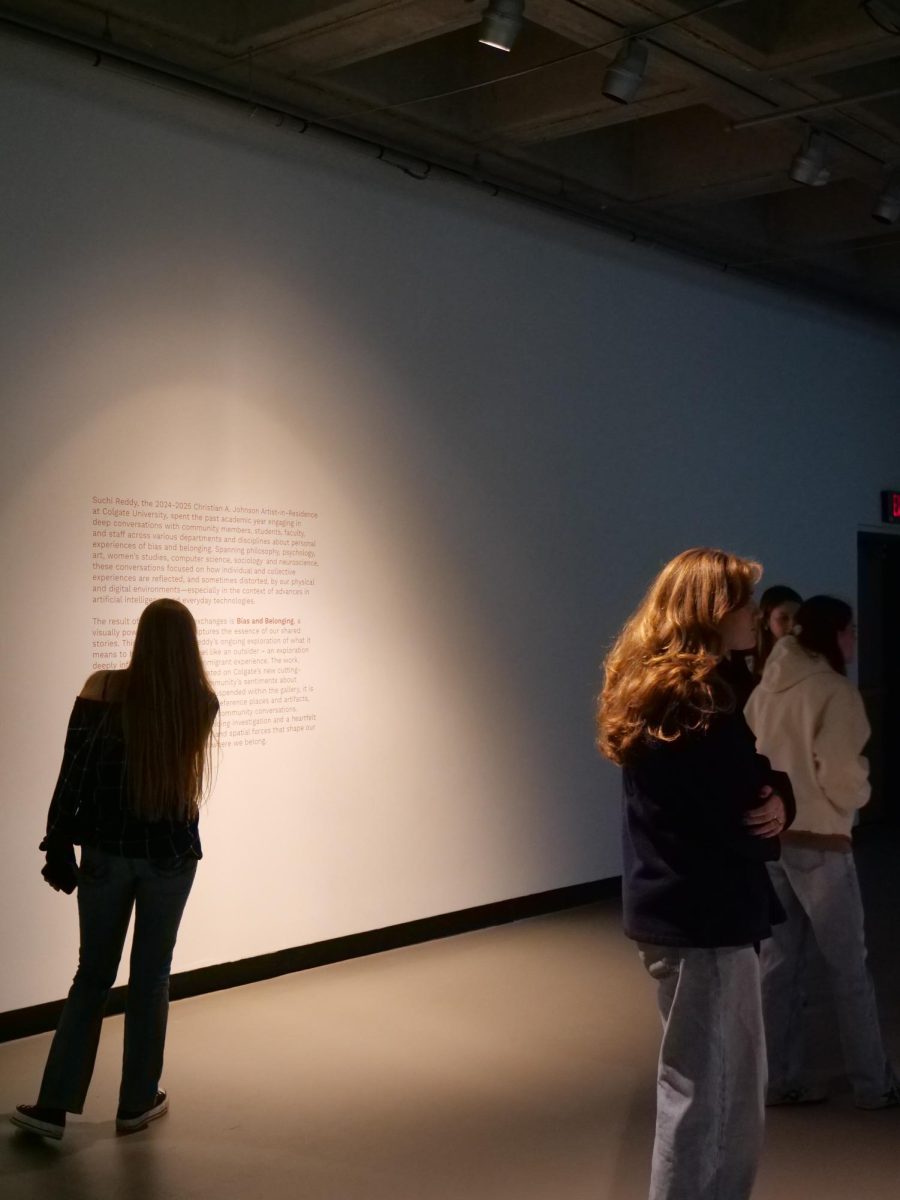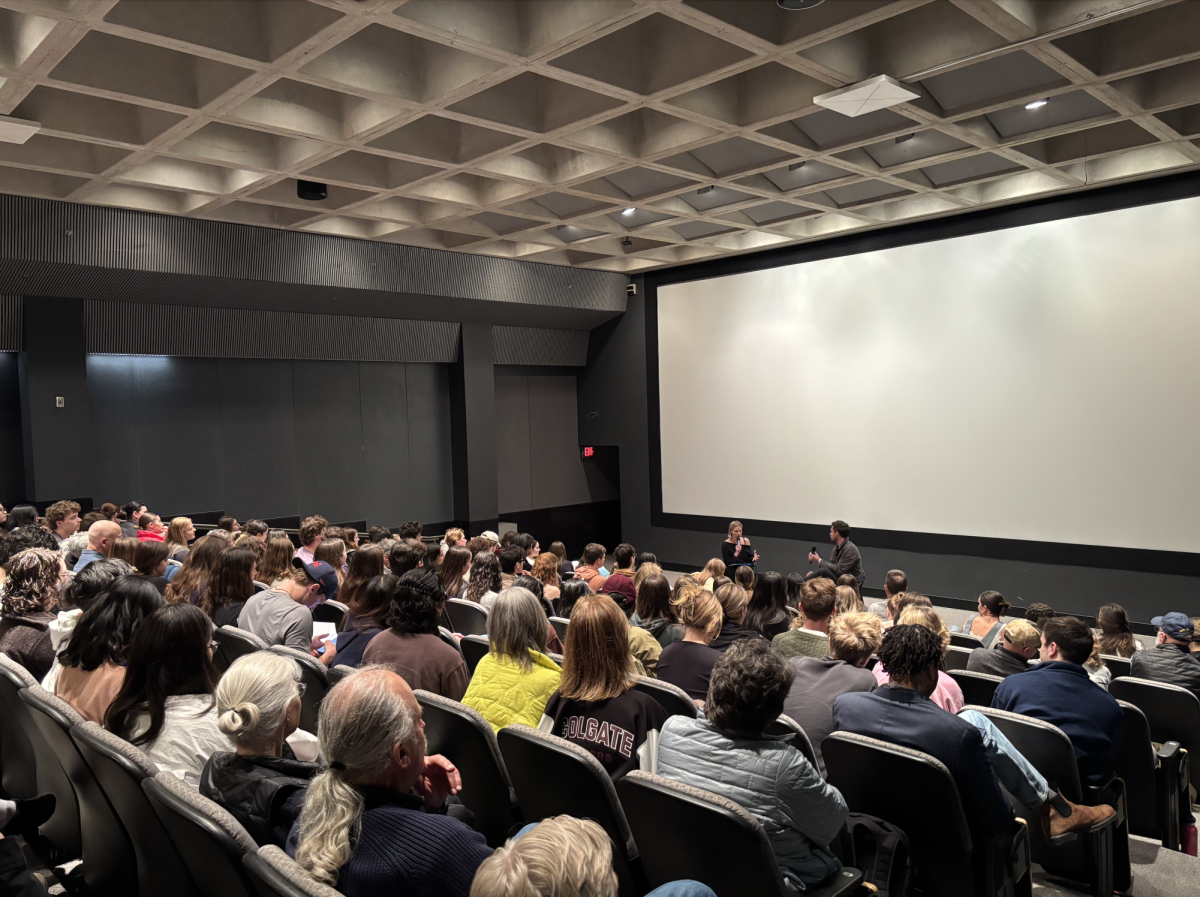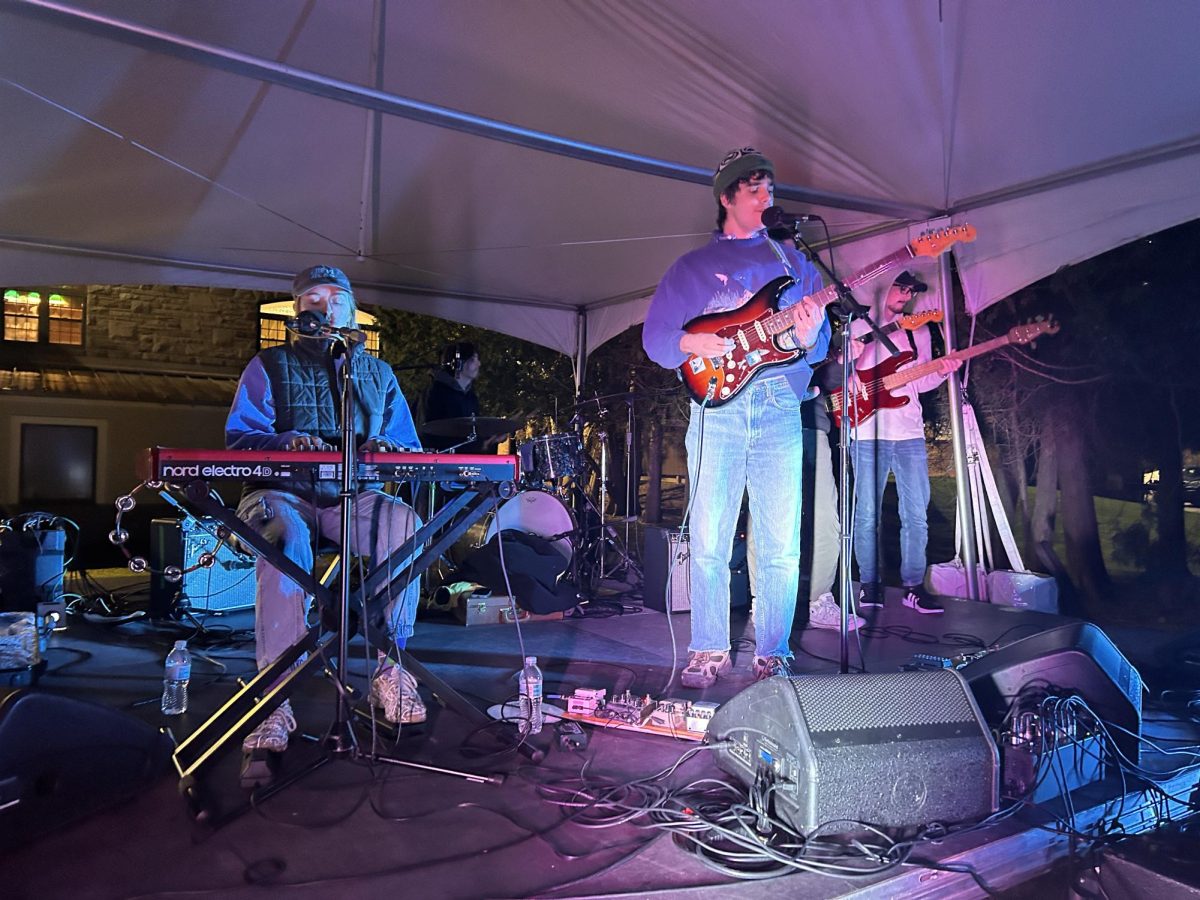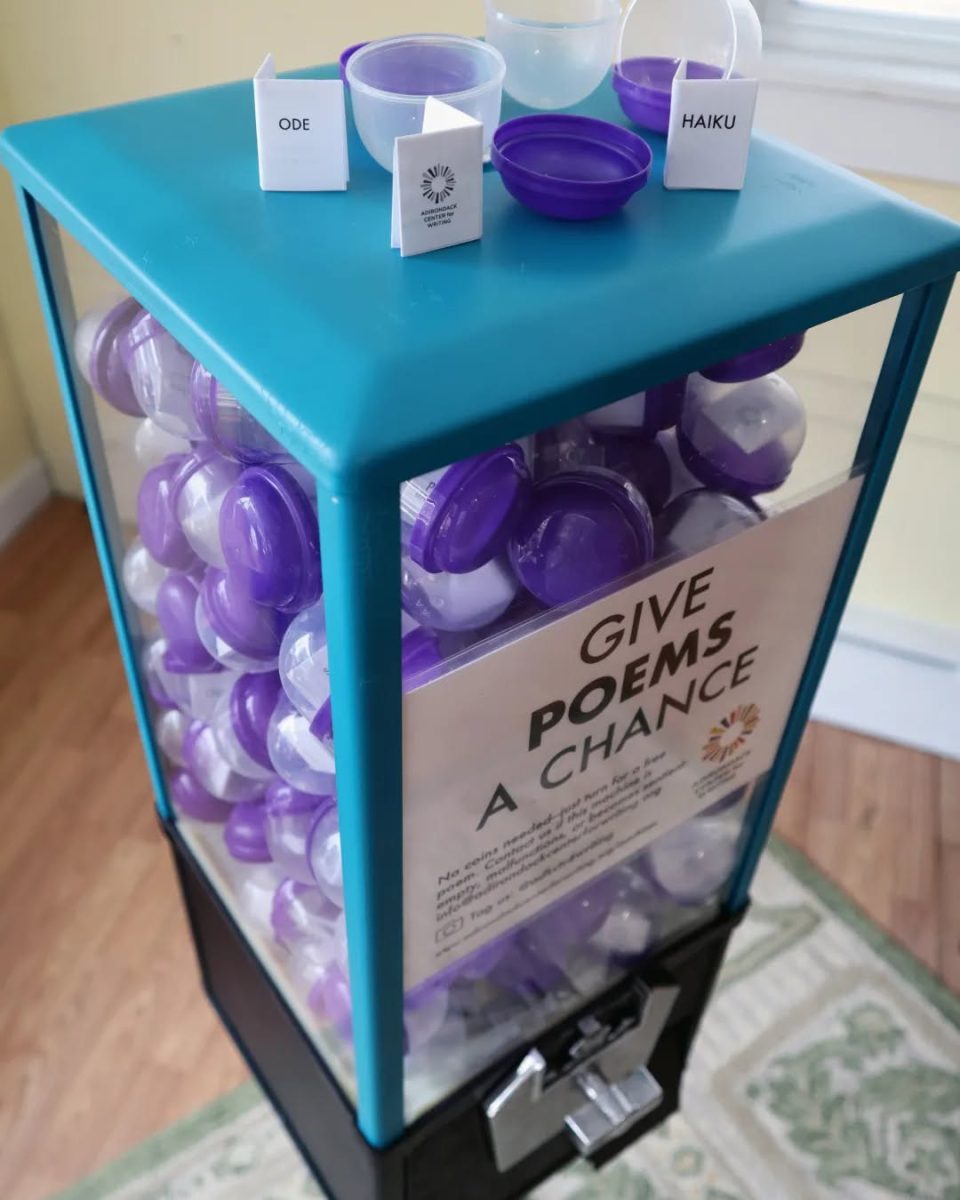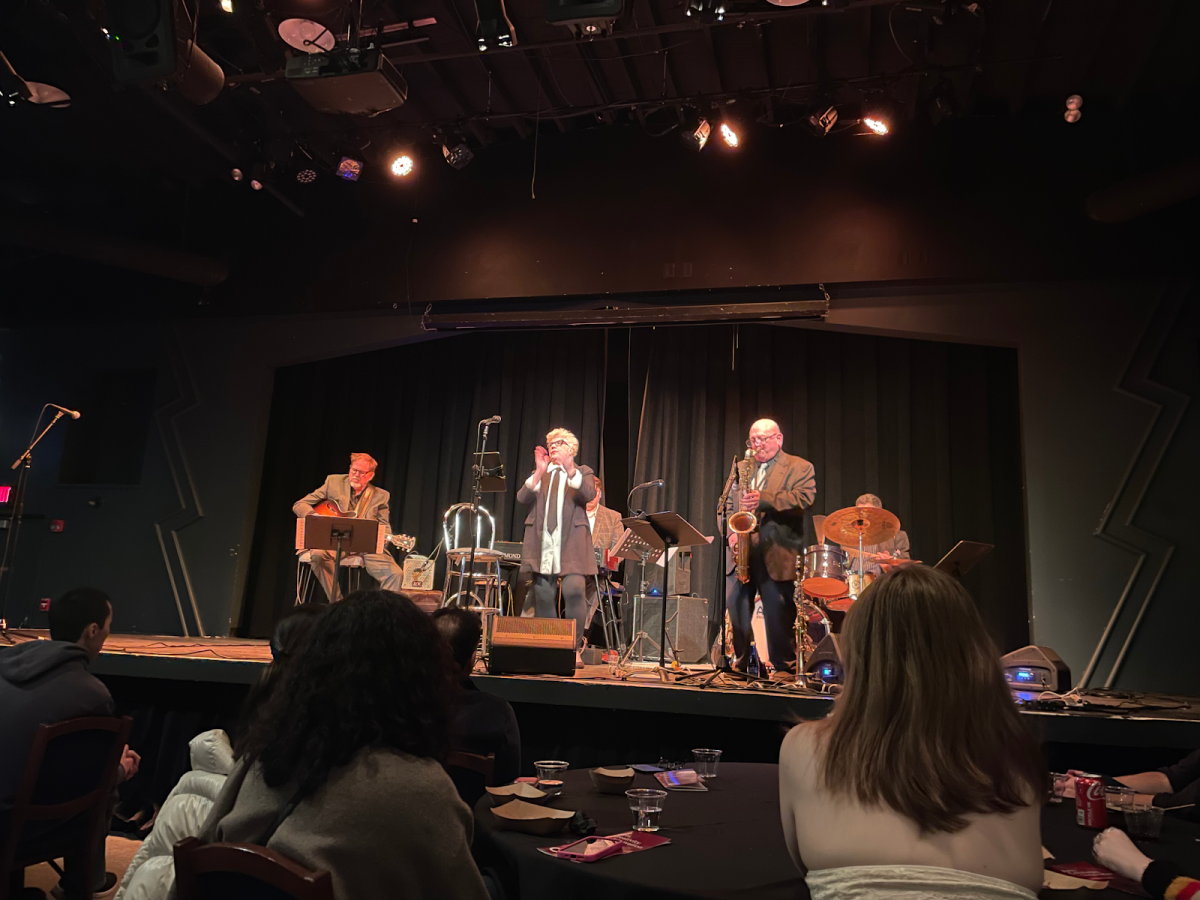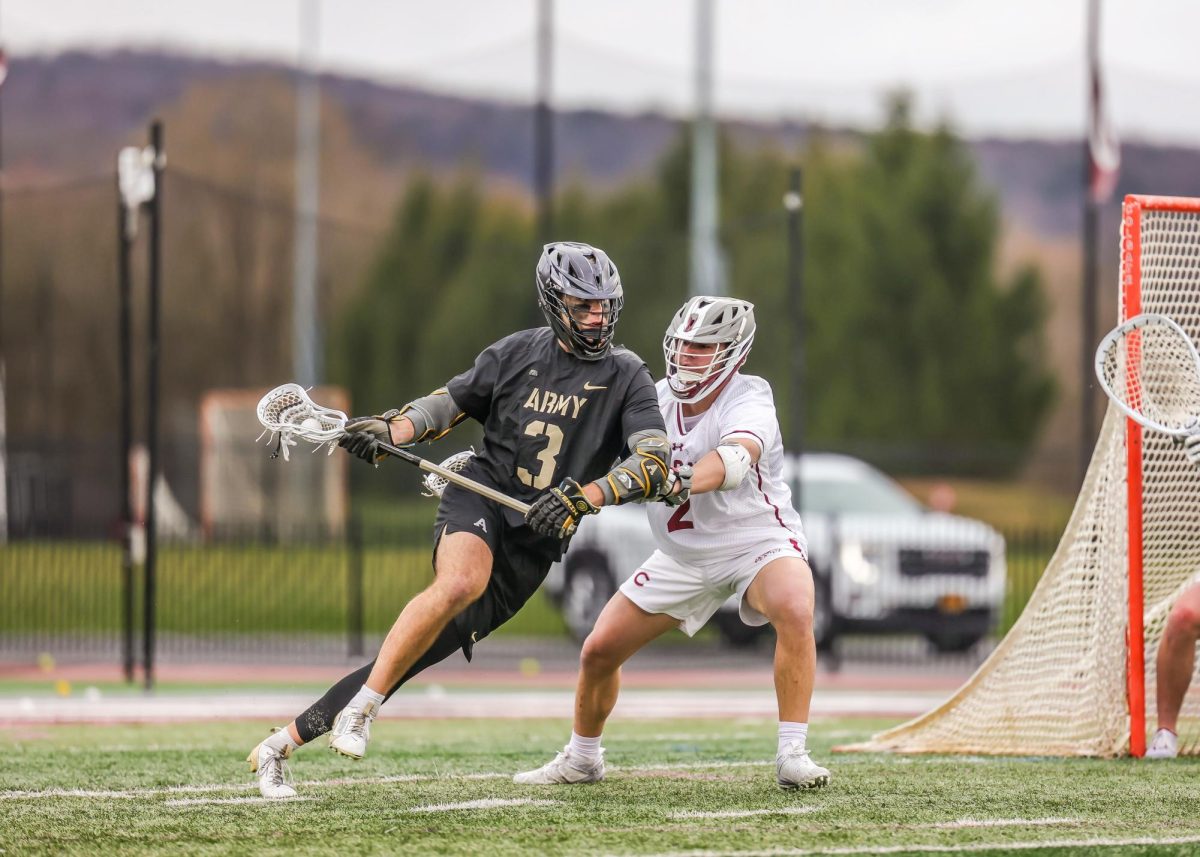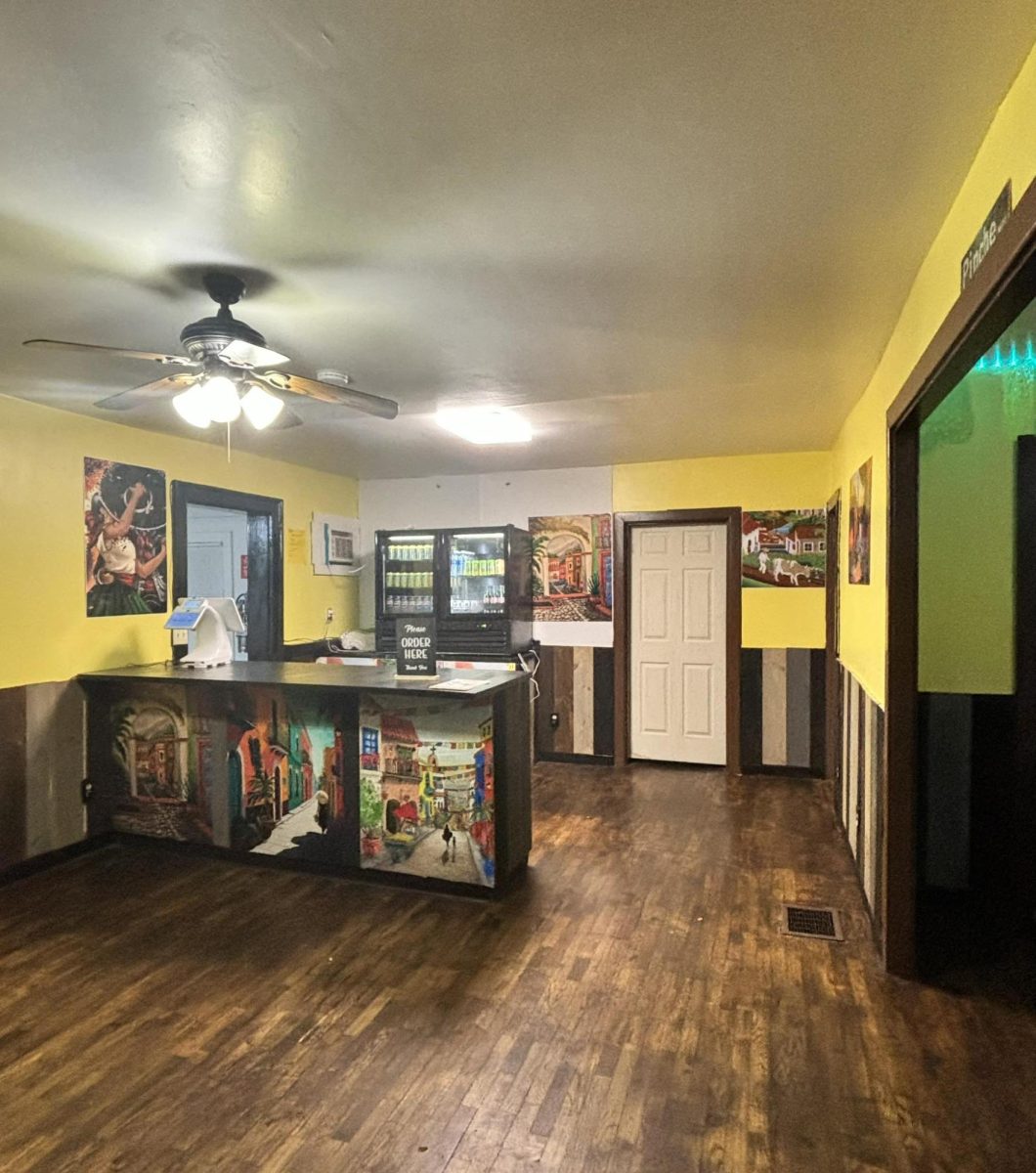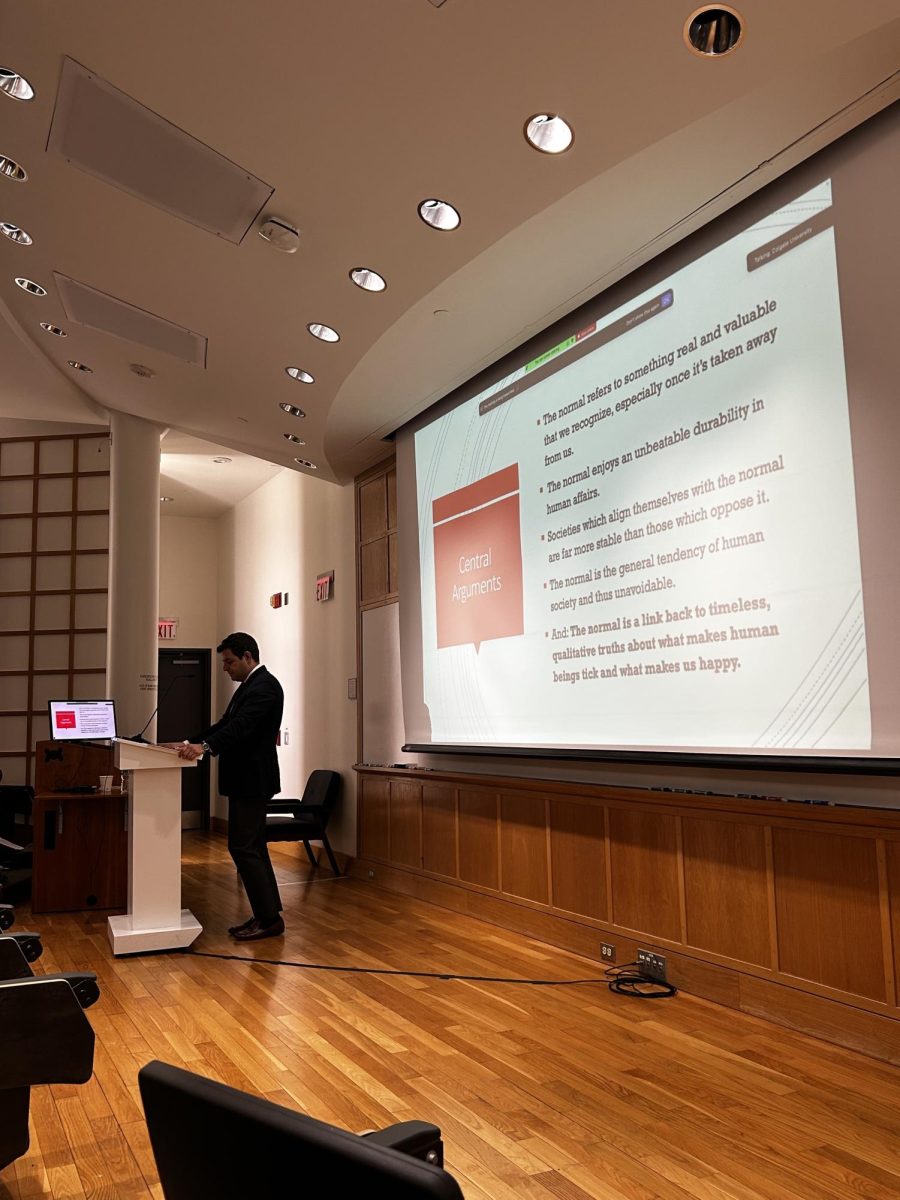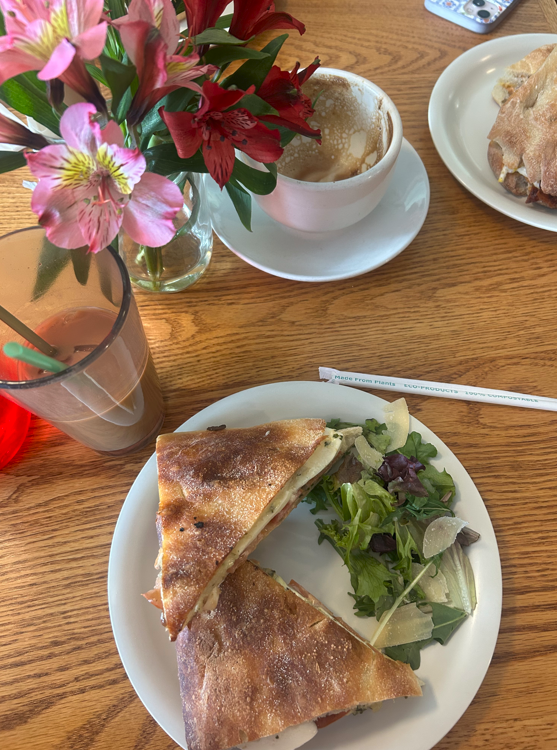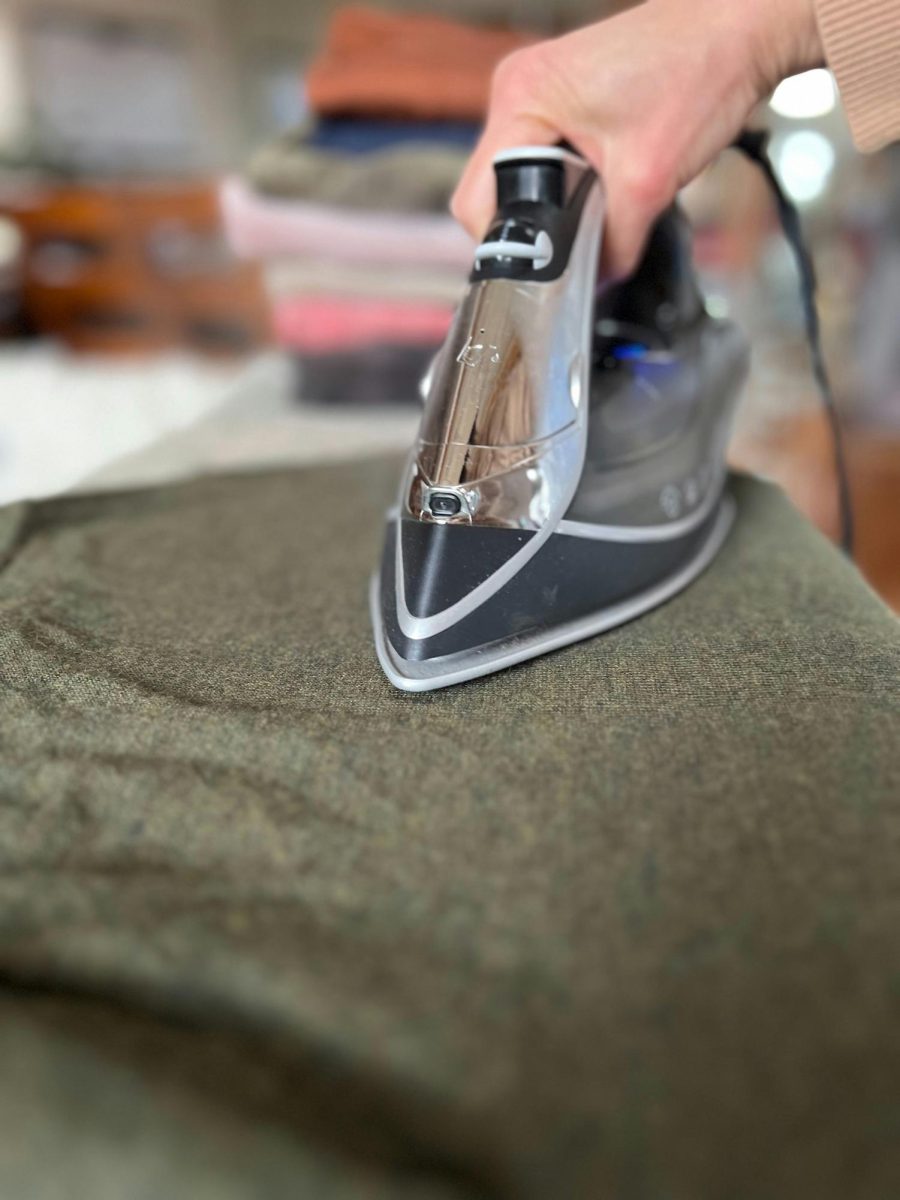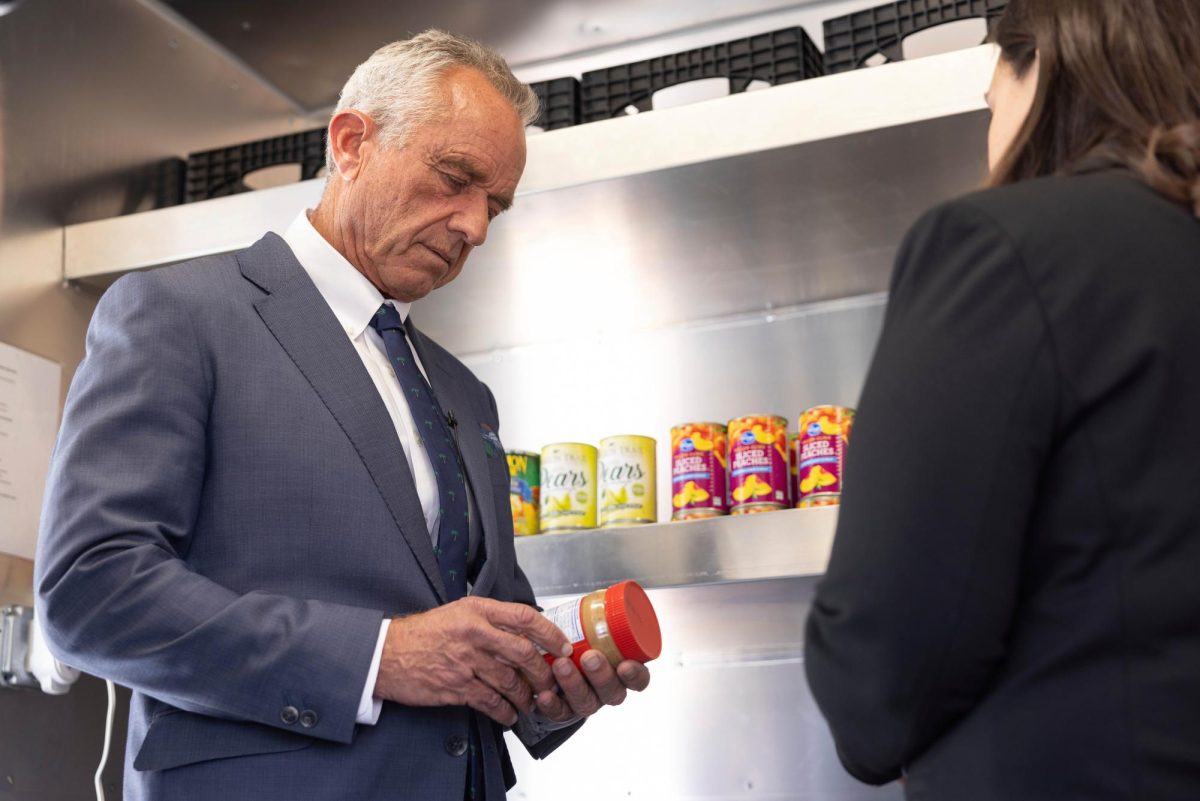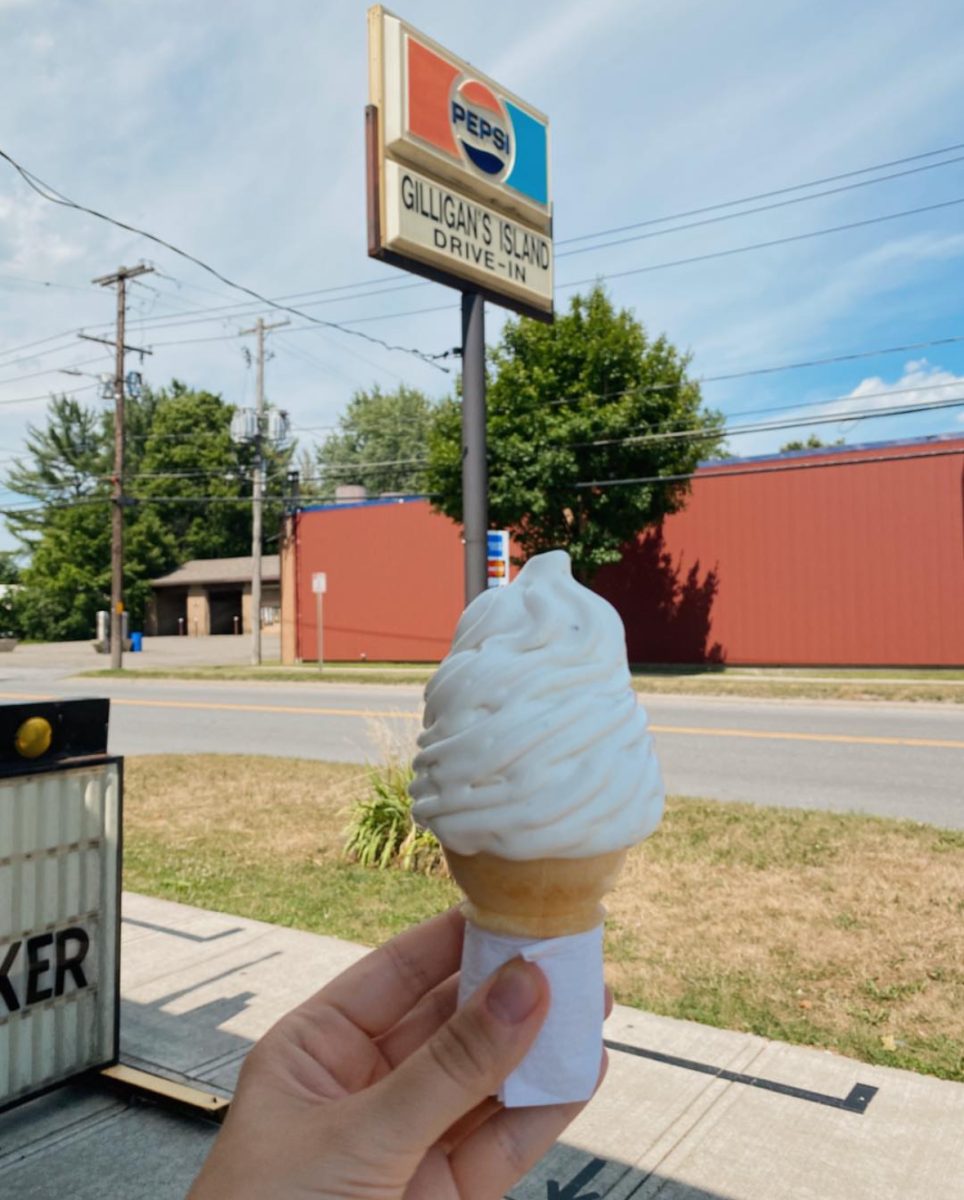Little Hall opened its doors for an exhibition from Suchi Reddy, Colgate University’s 2024-2025 artist in residence, to a crowd of students, faculty and guests during Arts, Creativity and Innovation (ACI) Weekend on Friday, April 4. The exhibition, “Bias and Belonging,” drew in a variety of art aficionados and was presented by the art department and the Christian A. Johnson Foundation.
From weavers to architects, the reception was loud and packed for over two hours. Attendees picked at the impressive food display while mingling with the artist and other guests, remarking on the exhibition’s depth of meaning. The mix of digital and physical mediums made for an intriguing experience once attendees stepped into the dimmed gallery room.
Given that the opening was held during ACI Weekend, students reveled in the impact of art on campus, including junior Brittany Cohen.
“As someone who is interested and looking forward to working with film, it’s a bit surreal to see such an emphasis on the arts here at Colgate,” Cohen said. “To see something outside of [economics] and hard sciences, since the school is so wrapped up in it, is exciting.”
Colgate alumni also visited the Clifford Gallery for this exhibition, drawn in by the weekend’s activities and the unique opportunity to see a Colgate-centered exhibition that wasn’t slathered in maroon.
“I was in the area for ACI Weekend and wanted to see what this was about,” alumnus Hunter Firment ’22 remarked. “I like the artist’s statement.”
The multimedia installation reflects on varying experiences of inclusion, exclusion and prejudice, both realized and not. To build it, Reddy spent this academic year asking Colgate students, faculty, staff and Hamilton residents to reflect on feelings of belonging and exclusion and then to think about when they contributed to those feelings for other people. This culminated in a series of handwritten notes she then projected on Clifford Gallery’s walls. Through light projections, the stories physically reflect on attendees as they enter the room.
“The first conversation was, of course, a little awkward,” Reddy laughed. “People were like, ‘Why is she asking about bias, and what is that?’ Belonging most people get, but bias, a lot of people don’t.”
In the context of the exhibition, bias seemed to be a cooperating concept with belonging. The two ideas mirror each other, describing the fundamentally human way people interact with the world and each other: with mistakes and prejudice but also with kindness and inclusion. The two concepts can’t possibly be mutually exclusive, as Reddy explored in the exhibition. When she asked people when they experienced or propagated belonging and bias, many had the same answer.
“Most of them ended up [saying] the same word: family. Family would be the place where you felt both belonging and bias,” Reddy said.
The other part of the exhibition, a woven tapestry hung in the center of the room, depicted a variety of patchwork images. A red cord, mimicking a pulse on a heart monitor, jumped through the images. The physical piece and its focus on pictures contrasted with the intangible text on the walls. It also served to represent the written stories in a different light.
“All places have icons. There’s a legend in a city map for this thing and this thing, and I wanted to take that language and cross-breed that with patterning and textiles,” Reddy said. “In a way, it was a fun exercise.”
Reddy’s entire experience at Colgate as part of an artist’s residency, especially being an architect, was unusual yet rewarding. The residency all culminated in this exhibition.


